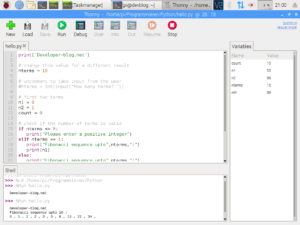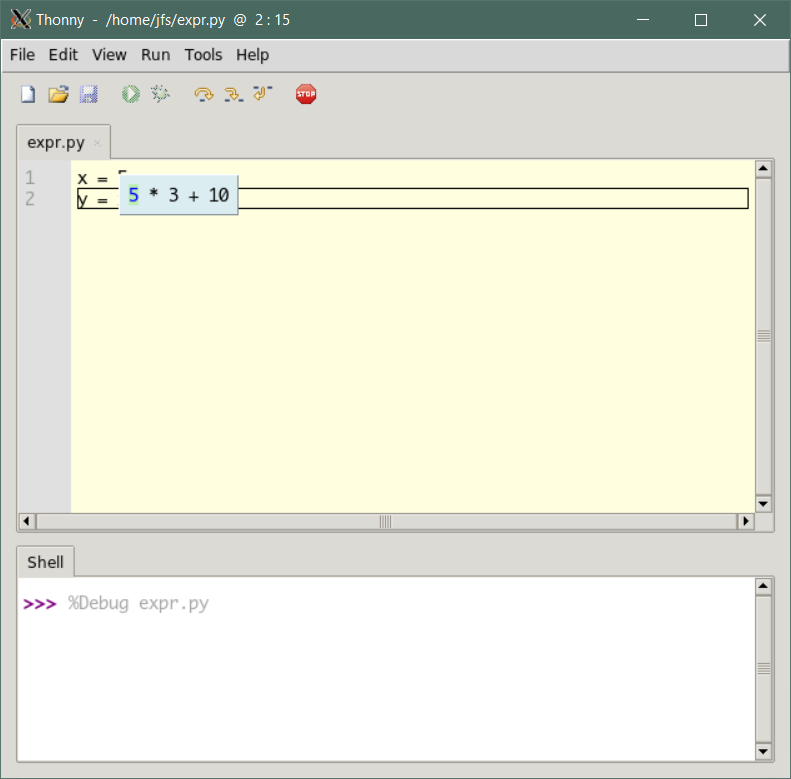
Feedback from students and staff at the Institution are effectively heeded and attempted to be measured.Ĭomputer science education in both South African universities and worldwide often aim at making students confident at problem solving by introducing various programming exercises. This is used as a means to even the playing field in a diverse country like South Africa and address the lack of consistent access to a problem solving environment.
#Ownload thonny editor free#
This paper describes a new approach at first-year level that uses the power of a modified Linux distro on a flash drive to enable access to the same, fully-fledged, free and open-source environment, including the convenience of portability. However, with the diverse student base in South Africa, not everyone has access to a personal computer or expensive software. Research shows that having consistent access to this exposes students to core concepts of Computer Science.
#Ownload thonny editor software#
Standardising a computer environment where students can apply their computational thinking knowledge on a more even playing field – without worrying about software issues – can be beneficial for problem solving in classroom of diverse students. The theoretical work that we report here lays a foundation for future empirical research that compares the effectiveness of RPB rulesets as well as different methods for teaching a particular ruleset.Ĭomputer science education in both South African universities and worldwide often aim at making students confident at problem solving by introducing various programming exercises. Within computing education research, the framework can inform, among other things, the ongoing exploration of “notional machines” and the design of assessments and visualizations. We submit that the RPB framework is valuable to practitioners and researchers as a tool for design and communication.

As a proof-of-concept example, we present a progression of rulesets designed for teaching beginners how expressions, variables, and functions work in Python. Instructional designers may define progressions of RPB rulesets for different stages of a programming course or curriculum we identify evaluation criteria for RPBs and discuss tradeoffs in RPB design.

Different programming languages, student cohorts, and contexts call for different RPBs. RPBs are teacher-facing statements that describe what needs to be learned about the behavior of a specific sort of programs. In this framework, detailed learning objectives are written down as rules of program behavior (RPBs).

We propose a framework for identifying, organizing, and communicating learning objectives that involve program semantics.


 0 kommentar(er)
0 kommentar(er)
